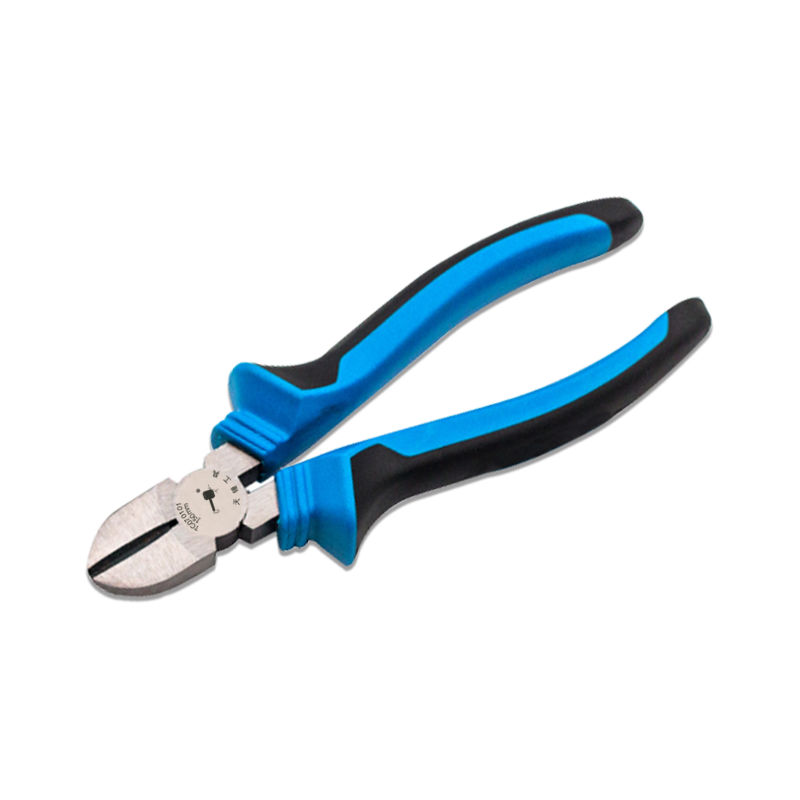Pliers are a hand tool used to clamp and fix workpieces or to twist, bend, and cut wires.
The shape of the pliers is V-shaped, and usually includes three parts: handle, pliers jaw and pliers mouth.
The pliers handle is designed according to the principles of ergonomics for a safer and more comfortable grip. Connection axis is the axis point of the pliers. The connection point must move smoothly without any looseness, so that the pliers can be easily opened or closed with one hand. Pliers head with clamping jaw or cutting edge are finely ground to a suitable shape. The two cutting edges (with springs) must be very sharp and close precisely to each other for easy cutting of the wire. Pliers are generally made of carbon structural steel. First, they are forged, pressed and rolled into the shape of the pliers blank, and then undergo metal cutting processes such as grinding, milling, polishing, and finally heat treatment.
Main classification of pliers
Wire pliers: Also called vise, it is a clamp and cutting tool. The wire pliers are composed of a pliers head and a pliers handle. The pliers head includes a jaw, a tooth mouth, a knife edge, and a guillotine mouth. The functions of each part are:
The teeth can be used to tighten or loosen the nut.
The knife edge can be used to cut the rubber or plastic insulation layer of flexible wires, and can also be used to cut wires and iron wires.
The guillotine can be used to cut hard metal wires such as electric wires and steel wires.
Commonly used wire cutters have various specifications such as 150mm, 175mm, 200mm and 250mm.
Needle-nose pliers: mainly used to cut single-strand and multi-strand wires with thinner diameters, as well as to bend single-strand wire joints, peel off plastic insulation layers, etc. It is also one of the tools commonly used by electricians (especially internal electricians) .
Biased pliers: Usually also called diagonal pliers. When cutting the wires, especially when cutting off the excess wire ends after the soldering points are wound on the wire and the lead wires that are too long after the printed circuit board is placed on the plug-in, the tool of partial jaw pliers is the best. The pliers with a body length of 160 mm and a plastic insulating handle are the most commonly used.
Wire stripper: suitable for stripping plastic and rubber insulated wires and cable core wires. The method of use is: put the end of the wire to be stripped in the cutting edge of the pliers head, pinch the two pliers handles with your hands, and then loosen, the insulation will be separated from the core wire.
Pipe wrench: used to fasten or remove various pipes, pipe accessories or round parts. Common tools for pipeline installation and repair.
Water pump pliers: Acts like a pipe wrench. However, it is lighter, smaller and easier to use than the pipe wrench. Generally, it is more suitable for household non-professional emergency or simple installation of water pipes. Of course, the clamping force is not as good as the pipe wrench.
Precautions
Use the pliers with the right hand. Turn the jaws to the inside to control the cutting position, put your little finger between the handles of the pliers against the pliers handles, and open the pliers head so that the handles can be separated flexibly.
The insulating plastic tube of the pliers has a withstand voltage of more than 500V. Do not throw it around during use, so as not to damage the insulating layer.
Never use pliers as a hammer.
Do not use pliers to cut double-strand live wires, as short circuits may occur.
Post time: Nov-18-2022


